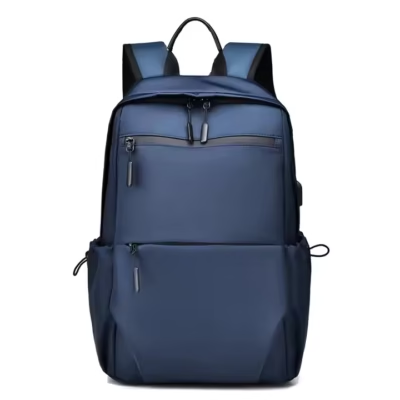If you’ve been eyeing a MagSafe power bank, you’ve probably noticed two clear choices: Apple’s own or a third-party version. Both can snap onto your iPhone and charge it wirelessly, but the differences go beyond the logo on the back. Here’s how to choose the one that actually makes sense for you.
How MagSafe Power Banks Work and Why It Matters
MagSafe uses magnets to snap the charger into the perfect spot every time. This ensures the charging coil lines up with your phone, reducing wasted energy and keeping the connection steady. A certified MagSafe charger delivers up to 15W of wireless power, while uncertified versions may only hit 7.5W.
Wireless charging isn’t as efficient as wired. You lose some energy as heat, which is why your phone might feel warm after a long charge. Apple’s models are tuned to manage heat and power flow in line with iOS limits, but many third-party brands now include similar safety features if they’re licensed.
The main point here is compatibility. Apple’s MagSafe works with iPhone 12 and newer. Third-party options can work with those models too, but quality and performance will depend on whether they’re certified or just “MagSafe-compatible power banks.”
Apple vs Third-Party: Key Differences
Capacity and Size
Apple’s MagSafe Battery Pack has a modest capacity. It’s small, light, and pocket-friendly, but won’t fully charge your phone from 0% to 100%. Third-party brands often offer 5,000 mAh, 10,000 mAh, or more, which means extra charges but also extra weight.
Charging Speed
Apple’s pack charges at 15W when attached, and can pass through higher speeds when plugged in via cable. Third-party options vary widely. Some match Apple’s speed, others only reach 7.5W wirelessly, but many add fast wired ports for when you need a quicker top-up.
iOS Integration
Apple’s model shows exact battery levels in your iPhone’s battery widget without any extra setup. This integration is smooth and automatic. Most third-party packs don’t connect directly to iOS this way, though a few certified ones might.
Price and Value
Apple charges a premium for its pack, and part of that price covers the seamless integration and Apple’s safety testing. Third-party models are generally cheaper and often pack in more capacity, but you need to check build quality and heat control.
Safety and Battery Health Considerations
Heat is the main concern with any wireless charger. Over time, high heat can stress your battery. Apple’s software and hardware are tuned to control temperature, slowing charging if things get too hot.
With third-party options, safety depends on the brand’s design. Certified MagSafe chargers meet Apple’s requirements for heat and charging limits. Uncertified ones may still be safe, but you’re relying on the manufacturer’s own safety systems.
If you’re worried about warranty issues, Apple doesn’t void your warranty just for using third-party accessories, but damage caused by a faulty charger wouldn’t be covered. That’s another reason to choose a reputable third-party brand.
Build quality matters too. A strong magnetic hold prevents the pack from sliding around and breaking the connection. Solid casing protects the battery cells from damage if dropped.
Which Works Best for Your Use Case
Everyday Carry
If you want something light and slim that slips into a pocket without feeling bulky, Apple’s pack fits that bill. It’s enough to get you through the day if you’re topping up here and there.
Travel
For longer trips where you won’t see an outlet for hours, third-party packs with 10,000 mAh or more make sense. They can fully charge your phone multiple times and often include wired ports for faster charging during short breaks.
Multi-Device Charging
If you need to charge more than just your iPhone, third-party packs win. Many have extra USB-C or USB-A ports for headphones, tablets, or even another phone. Apple’s pack is strictly for MagSafe charging one device at a time.
Heavy Work Days
If your phone is always on calls, navigation, or recording video, you’ll want capacity and speed. A third-party pack with strong magnets, 15W wireless charging, and a high-speed USB-C output covers you better than Apple’s smaller pack.
Quick Comparison Table
| Feature | Apple MagSafe Battery Pack | Third-Party MagSafe Power Banks |
|---|---|---|
| Capacity | Low (partial charge) | Medium to high (full multiple charges) |
| Size & Weight | Slim, very light | Larger, heavier |
| Wireless Speed | 15W (MagSafe certified) | 7.5W–15W depending on model |
| Wired Speed | Higher when plugged in | Often high-speed USB-C options |
| iOS Integration | Full battery widget support | Rarely integrates directly |
| Price | High | Lower to mid-range |
| Safety Controls | Apple-managed heat and charge limits | Varies; better if certified |
Final Takeaway
If you want a slim, pocket-friendly charger with seamless iOS integration and guaranteed safety controls, Apple’s MagSafe pack is the safe bet. If you want more capacity, better value, and flexibility for other devices, a reputable third-party MagSafe power bank is the smarter buy.
Both options can keep your iPhone running. The choice comes down to how much you value Apple’s integration versus the extra power and features third-party packs can give you.





